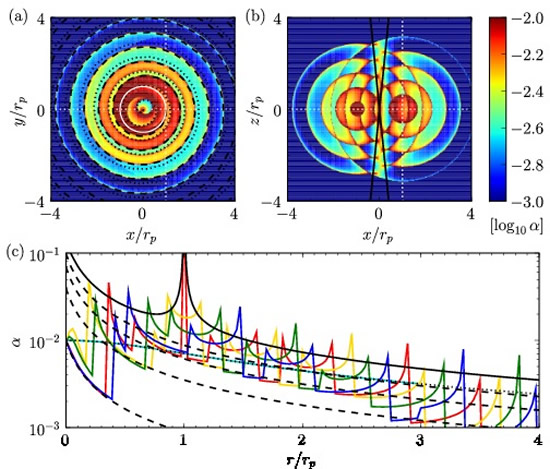Research Gallery > The Theoretical Astrophysics (Theory)
Research Gallery
The Theoretical Astrophysics (Theory)
| Gravitationally Induced Density Wake of a Circularly Orbiting Object As an Interpretative Framework of Ubiquitous Spirals and Arcs |
|
Image Credit: Hyosun Kim

The above figures show the density enhancement of the spiral-onion shell shape (a) in the equatorial plane, (b) in a meridional plane, and (c) as a function of the distance from the system center along +x (red), -y (yellow), -x (green), +y (blue), and z (cyan) axes.
|
| An orbiting object in a gas rich environment creates a gravitational density wake containing information about the object and its orbit. A study determining the observable properties of the gravitational wake due to the object circularly moving in a static homogeneous gaseous medium has been carried out based on linear perturbation theory. Supersonic motion, producing a wake of spiral-onion shell structure, exhibits a single-armed Archimedes spiral and two-centered circular arcs with respect to the line of sight. The pitch angle, the arm width, the arm spacing, and the arm-interarm density contrast of the spiral pattern as well as the vertical extent of the arcs are determined by the mass, orbital distance, and Mach number of the object. Diagnostic probes of nonlinear wakes such as a detached bow shock, the absence of the definite inner arm boundary, the presence of turbulent low density eddies, and elongated shapes of arcs are explained in the extension of the linear analysis. (Hyosun Kim, 2011, ApJ, 739, 102) |
 asiaa.sinica.edu.tw Media Request: epo
asiaa.sinica.edu.tw Media Request: epo asiaa.sinica.edu.tw
asiaa.sinica.edu.tw 